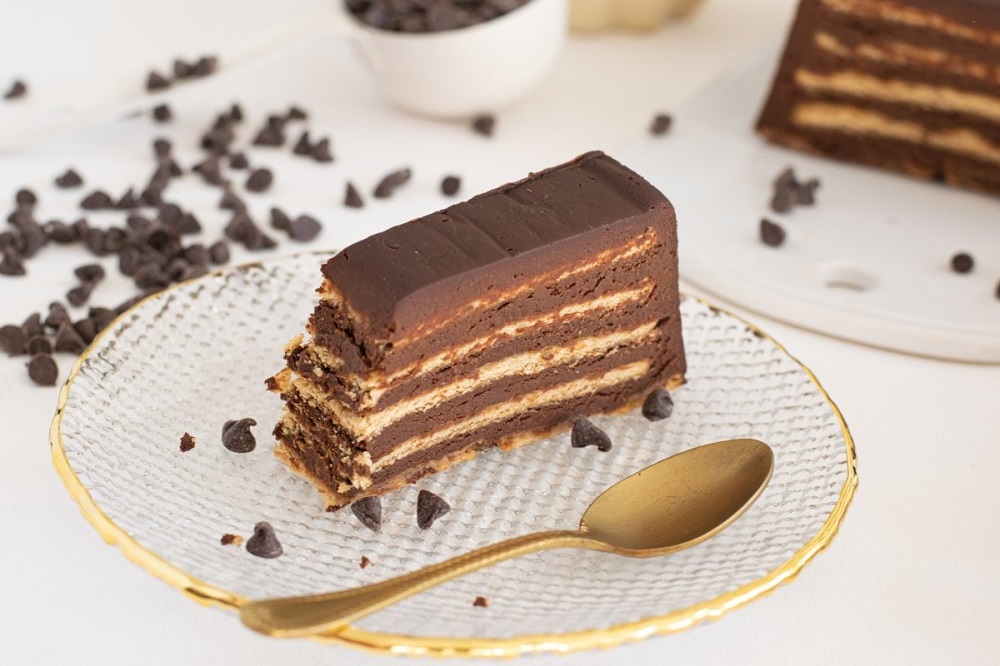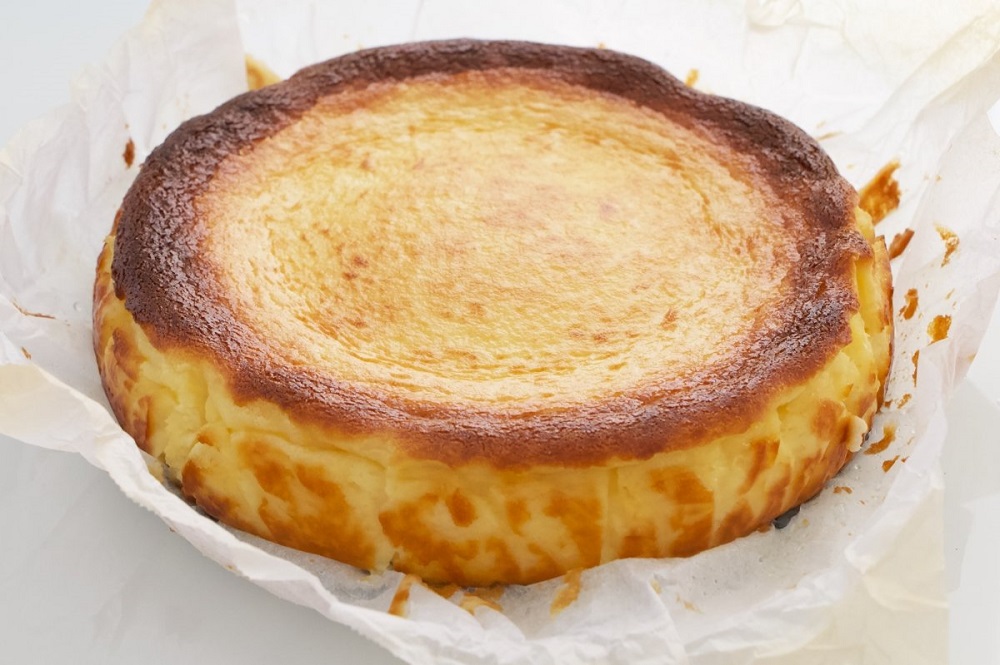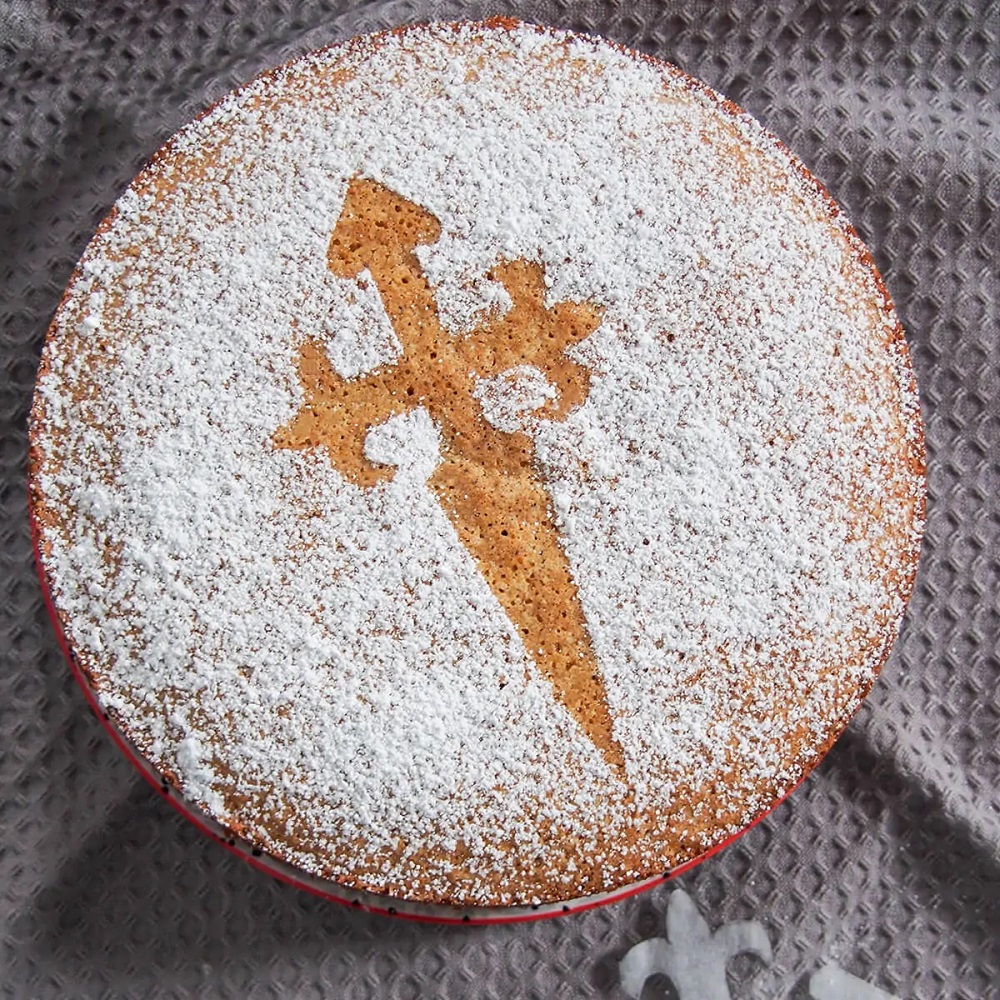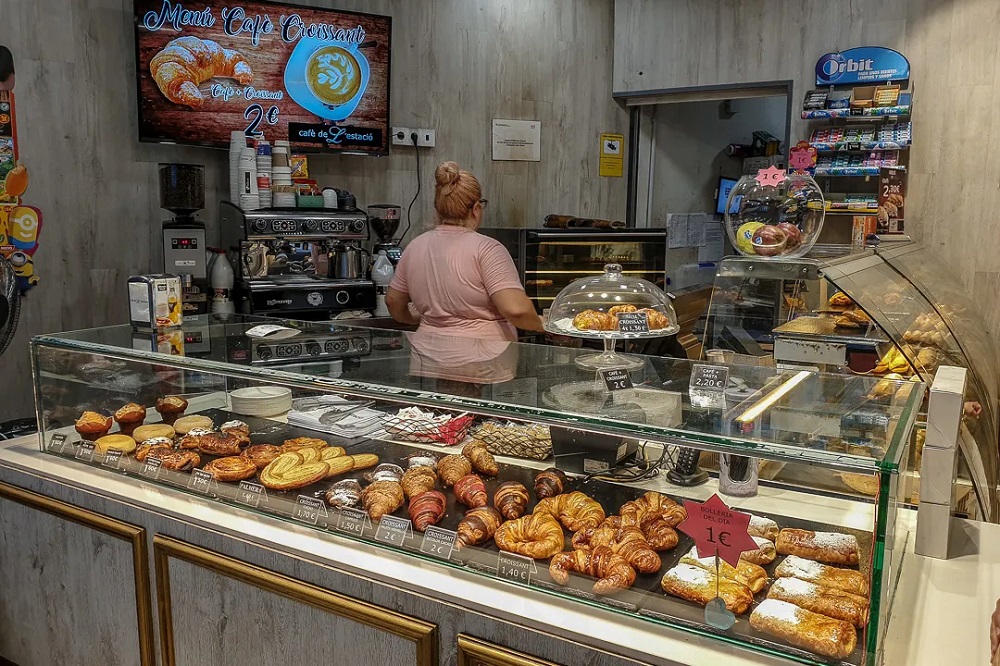Spain, a country renowned for its rich history, vibrant culture, and picturesque landscapes, is also a haven for food enthusiasts. From the savory tapas to the delectable wines, Spanish cuisine offers a plethora of flavors that tantalize the taste buds. But there’s one aspect of Spanish gastronomy that often gets overshadowed by its savory counterparts – the world of Spanish pastries. Each region in Spain boasts its unique pastry, a sweet treat that tells a story of its origin, tradition, and the people who cherish it. In this blog post, we’ll embark on a sweet journey through Spain, exploring the diverse range of pastries that have been delighting locals and tourists alike for centuries.

Antonella Lopez
Table of Contents
- A Regional Guide to Spain’s Delectable Pastries
- Your Spanish Journey Starts Here: Buenos Aires, Malaga, or Anywhere You Are
- The Language of Pastries in Spain
- Spain’s Beloved ‘Tartas’: A Sweet Journey Through Time and Tradition
A Regional Guide to Spain’s Delectable Pastries
As we delve into the world of Spanish pastries, it becomes evident that each region of Spain boasts its own signature sweet treat, a testament to its unique culture, history, and culinary influences. From the coastal areas of Catalonia to the rugged terrains of the Basque Country, every region has a story to tell, and what better way to narrate these tales than through their iconic pastries? The following chart offers a curated journey through Spain, one pastry at a time, highlighting the essence of each region. Let’s embark on this sweet expedition and discover the flavors that define the diverse landscapes of Spain.
Spanish Pastries by Region
| Region | Pastry | Description |
|---|---|---|
| Asturias | Casadielles | Traditional Spanish pastry rolls filled with walnut. Made with olive oil, warm water, flour, fine sugar, and a filling of walnuts, sugar, butter, and anise-flavored liqueur. Typically fried and dusted with sugar. |
| Andalusia | Roscos fritos | Similar to donuts but sweeter and often rolled in sugar after being fried. Made with eggs, sugar, flour, oil, and grated lemon rind. Consumed especially during Easter festivities. |
| Andalusia | Pestiños | Pastries fried in olive oil, made with flour, yeast, sesame, and sometimes orange juice and cinnamon. Traditionally topped with honey or sugar. Consumed during Holy Week and Christmas. |
| Granada | Piononos | Syrupy sponge cake filled with cream and cinnamon, rolled up, drenched with rum-laced syrup, and crowned with toasted cream and sugar. Named in tribute to Pope Pius IX (Pio Nono). |
| Alcalá de Henares | Flores de hojaldre | Puff pastry shaped into flowers or roses. Known for its light, airy, and flaky texture. Typically served dusted with powdered sugar. Can be made in both sweet and savory versions. |
| Mallorca | Ensaïmada de Mallorca | Spiral-shaped sweet pastry made with yeast dough combined with eggs and lard. The name ensaïmada comes from “saïm”, meaning lard. Variations include those with pumpkin, cream, or chocolate. |
| Catalonia | Coca | Traditional pastry prepared in sweet and savory varieties. The sweet variety is topped or filled with candied fruit, marzipan, cream, or pine nuts. The savory variety uses yeast and salt. Resembles flatbread, pizza, or cake. |
| Spain (General) | Rosquillas | Deep-fried donuts with a hole in the middle. Prepared with eggs, sugar, milk, oil, lemon zest, flour, baking powder, and anisette. Varieties include those made with sweet muscat wine, known as rosquillas de vino. |
| Spain (General) | Churros | Elongated, deep-fried yeast dough encrusted with sugar. Originally invented by Spanish shepherds. Most commonly eaten as a hot breakfast food, accompanied by coffee or thick hot chocolate. |
| Spain (General) | Napolitana de chocolate | Similar to the French “pain au chocolat”. Made with rectangular, yeast-leavened dough and chocolate sticks or ganache. This flaky pastry is commonly found in French bakeries and supermarkets. |
Your Spanish Journey Starts Here: Buenos Aires, Malaga, or Anywhere You Are
Are you ready to embark on a language adventure that’s as exciting as it is educational? Whether you’re yearning for the vibrant city life of Buenos Aires, the sun-drenched charm of Malaga, or the convenience of online learning, we’ve got just the ticket!

Learn Spanish in Argentina
Dive into the heart of Argentina with our Spanish school in Buenos Aires. Experience the city’s pulsating energy, rich history, and captivating culture as you master the Spanish language. Buenos Aires is calling – will you answer?
www.vamospanish.com/spanish-school-buenos-aires/

Learn Spanish in Malaga
Imagine yourself soaking up the Andalusian sun as you learn Spanish in Malaga. Our school offers a unique blend of top-notch education and laid-back beach vibes. It’s not just a language course – it’s your passport to the Mediterranean lifestyle!
www.vamospanish.com/spanish-school-malaga/

Learn Spanish Online
Can’t travel right now? No problem! Our online Spanish classes bring the language, culture, and fun right to your living room. Engage with our experienced teachers and enjoy interactive lessons from wherever you are in the world.
www.vamospanish.com/online-spanish-classes/
The Language of Pastries in Spain
Spain, with its rich linguistic tapestry, has a diverse vocabulary when it comes to describing its culinary delights. The world of pastries is no exception. The language used to describe these sweet treats varies from region to region, reflecting the deep-rooted cultural and historical influences of each area.
“Pastel” – The Universal Delight
At its core, the word “pastel” is the most commonly used term to describe a pastry in Spain. Derived from the Latin word “pastellum,” it generally refers to a sweet baked good. However, its meaning can vary, sometimes referring to cakes, tarts, or even pies.
Regional Nuances
In different parts of Spain, you might encounter variations in the terminology used for pastries:
- Tarta: Predominantly used to describe cakes or larger baked goods, often layered or filled.
- Bizcocho: This term is often used interchangeably with cake. However, it typically refers to a sponge cake or a simple, fluffy cake without layers or fillings.
- Empanada: While not strictly a pastry in the sweet sense, empanadas are a type of pastry filled with meat, fish, or other ingredients. The name derives from the Spanish verb “empanar,” meaning to wrap or coat in bread.
- Magdalena: A term used in many parts of Spain to describe small, muffin-like cakes. They are often flavored with lemon or vanilla and can be found in cafes and bakeries throughout the country.
- Rosquilla: A term that can be found in various regions, referring to ring-shaped pastries or donuts. They can be sweet, like the sugar-coated ones enjoyed during festivals, or savory.
Another typical pastry from Spain: Spanish Buñuelos at the Malaga Fair
The Influence of Local Languages
Spain is home to several regional languages, such as Catalan, Galician, and Basque. These languages have influenced the names of pastries in their respective regions. For instance:
- In Catalonia, you might hear the term “pastisset” to describe small pastries or “coca” for a type of flatbread that can be sweet or savory.
- In the Basque Country, “pastela” or “tarta” might be used, reflecting the Basque influence on the language.

Spain’s Beloved ‘Tartas’: A Sweet Journey Through Time and Tradition
When you think of Spain, images of flamenco dancers, sun-kissed beaches, and vibrant fiestas might come to mind. But delve a little deeper, and you’ll discover a nation passionately in love with its desserts, especially the ‘tartas’. These aren’t just cakes or tarts; they’re edible chronicles of Spain’s rich history, regional pride, and family traditions. Let’s take a leisurely stroll through the Spanish countryside, city patisseries, and family kitchens to uncover the stories behind these beloved ‘tartas’.
Tarta de la Abuela (Grandmother’s Cake)
Imagine being a child again, walking into your grandmother’s kitchen and being greeted by the comforting aroma of chocolate and biscuits. Tarta de la Abuela is a heartwarming dessert that many Spaniards associate with cherished family memories. Layers of biscuits, drenched in milk and sandwiched between velvety chocolate pudding, culminate in a dessert that’s both humble and heavenly. Often, a silky layer of flan or custard graces the top, adding another dimension to its texture and taste.

Recipe for Tarta de la Abuela:
Ingredients:
- 2 packs of Maria biscuits (or any other plain biscuits)
- 1 liter of milk (for soaking the biscuits)
- 200g dark chocolate
- 50g unsalted butter
- 500ml milk (for the chocolate pudding)
- 100g sugar
- 2 tbsp cornstarch or custard powder
- Optional: whipped cream or flan for the top layer
Instructions:
- Prepare the Chocolate Pudding: In a saucepan, melt the dark chocolate and butter over low heat. Once melted, add in the 500ml milk, sugar, and cornstarch. Stir continuously until the mixture thickens into a pudding consistency. Remove from heat and set aside.
- Soak the Biscuits: In a separate bowl, pour the 1 liter of milk. Dip each Maria biscuit into the milk just long enough to soften them but not make them soggy.
- Layering: In a rectangular dish, start by placing a layer of the soaked biscuits. Pour over a portion of the chocolate pudding, ensuring the biscuits are covered. Repeat the layers until all ingredients are used, finishing with a layer of chocolate pudding on top.
- Chill: Place the assembled cake in the refrigerator for at least 4 hours, or overnight for best results.
- Serve: Once set, you can top the cake with whipped cream or a layer of flan if desired. Slice and serve chilled.
Are you a sweet lover? : Ice Cream Shops in Malaga: Top 5
Tarta de Queso (Cheesecake)
While cheesecakes are loved worldwide, Spain has its own twist on this classic. Eschewing the dense texture commonly found in other versions, the Spanish cheesecake is a dreamy, baked delight that almost dissolves in your mouth. The Basque Country’s version, with its intentionally burnt exterior, offers a delightful play of bitter and sweet, making it a must-try for anyone visiting the region.

Recipe for Tarta de Queso (Spanish Cheesecake):
Ingredients:
- 500g cream cheese (full fat)
- 200g granulated sugar
- 4 large eggs
- 250ml heavy cream
- 1 tsp vanilla extract
- 2 tbsp all-purpose flour
- A pinch of salt
- Optional: zest of 1 lemon or orange for added flavor
Instructions:
- Preparation: Preheat your oven to 210°C (410°F). Line the bottom of a 9-inch springform pan with parchment paper, ensuring the paper rises about 2 inches up the sides to capture any potential leaks.
- Mix Cream Cheese and Sugar: In a large mixing bowl, beat the cream cheese until smooth and creamy. Gradually add the granulated sugar and continue beating until well combined and the mixture is smooth.
- Add Eggs: One at a time, add the eggs to the cream cheese mixture, ensuring each egg is fully incorporated before adding the next.
- Incorporate Remaining Ingredients: Add the heavy cream, vanilla extract, and flour to the mixture. If using, add the citrus zest. Mix until everything is well combined and the batter is smooth. Ensure not to overmix, as this can introduce too much air into the batter.
- Pour and Bake: Pour the cheesecake batter into the prepared springform pan. Place the pan in the oven and bake for about 50 minutes. The top should have a beautiful caramelized color, and the center should still have a slight wobble to it.
- Cool and Chill: Once baked, turn off the oven and leave the cheesecake inside with the door slightly ajar for about an hour. This gradual cooling helps prevent the cheesecake from cracking. After an hour, remove the cheesecake from the oven and let it cool to room temperature. Once cooled, refrigerate for at least 4 hours, preferably overnight.
- Serve: When ready to serve, carefully remove the cheesecake from the springform pan and transfer it to a serving plate. Slice using a sharp knife dipped in hot water for clean cuts.
Serving Suggestions: The beauty of the Tarta de Queso lies in its simplicity. However, if you wish to elevate it further, consider serving with a berry compote, a drizzle of caramel sauce, or a sprinkle of powdered sugar. Fresh berries or a dollop of whipped cream can also complement the rich flavors of the cheesecake.
Tarta de Santiago (St. James Cake):
This isn’t just a cake; it’s a slice of Galician history and spirituality. Deeply associated with the Camino de Santiago pilgrimage, this almond-rich cake is a testament to the region’s almond orchards and the religious significance of St. James. The cake’s surface often features the cross of Saint James, imprinted using powdered sugar, adding to its historical allure.

Recipe for Tarta de Santiago (St. James Cake):
Ingredients:
- 250g ground almonds
- 250g granulated sugar
- 5 large eggs
- Zest of 1 lemon
- 1 tsp almond extract (optional for enhanced almond flavor)
- Icing sugar (for decoration)
- A stencil of the cross of Saint James (for decoration)
Instructions:
- Preparation: Preheat your oven to 180°C (350°F). Grease a 9-inch round cake tin and line the bottom with parchment paper.
- Mix Almonds and Sugar: In a large mixing bowl, combine the ground almonds and granulated sugar.
- Add Eggs: Beat the eggs in a separate bowl and then gradually add them to the almond and sugar mixture, mixing well after each addition.
- Flavoring: Stir in the lemon zest and almond extract (if using) until the batter is smooth and well combined.
- Bake: Pour the batter into the prepared cake tin, smoothing the top with a spatula. Place in the oven and bake for about 40-45 minutes, or until the cake is golden brown and a toothpick inserted into the center comes out clean.
- Cool: Once baked, remove the cake from the oven and let it cool in the tin for about 10 minutes. Afterward, transfer it to a wire rack to cool completely.
- Decoration: Once the cake is completely cooled, place the stencil of the cross of Saint James on top of the cake. Lightly sift icing sugar over the stencil, ensuring the cross design is clearly visible. Carefully remove the stencil.
Serving Suggestions: The Tarta de Santiago is traditionally enjoyed on its own, given its rich almond flavor. However, for those who’d like an added touch, consider serving it with a dollop of whipped cream or a side of fresh berries. A glass of Spanish dessert wine or a cup of coffee can also complement its flavors beautifully.
Also read our blog about: The Top 8 Spanish Wine Regions and a Brief History of Spanish Wine
Spain’s pastries are more than just sweet treats; they are a reflection of the country’s rich history, diverse culture, and the love and passion of the people who make them. Each region, with its unique pastry, offers a glimpse into its traditions, celebrations, and the local ingredients that shape its culinary identity. As we conclude our sweet journey through Spain, it’s evident that these pastries are not just food items; they are cherished memories, stories of generations, and a testament to Spain’s enduring love for good food. Whether you’re a seasoned traveler or a curious foodie, Spain’s pastries invite you to indulge, savor, and celebrate the sweet side of life.







